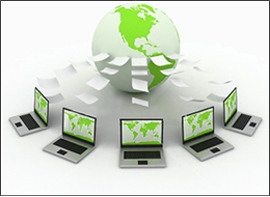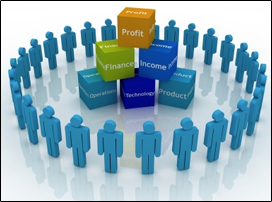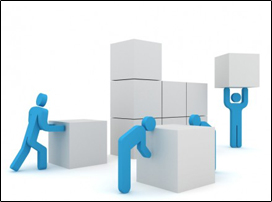





















System Implementation is the third phase in the JISC infoNet lifecycle approach, during which:
• The hardware and software system components are installed;
• The selected software is configured and tested;
• The software may be customised to meet local functional requirements;
• data mapping, cleansing and migration take place;
• reporting requirements are specified and reports produced;
• the whole system is tested before being approved, signed off and becoming a fully
operational production system.
System implementation projects are long difficult journeys by which organisations move from an old set of technology to a new one. Following a trend that goes back to the 1980s, these projects are far more common now than software development projects. Few colleges or universities have the combination of size, uniqueness and a wealth of technical resources to justify developing systems from scratch. Coupled with increasingly-dynamic external changes for both inputs and outputs to these systems, most tend to buy systems if they are available. Commercial systems developed for business purposes may demand major changes to traditional administrative approaches and result in cultural clashes. These issues are equally, if not more, evident where the implementation of learning management systems challenges accepted pedagogic practice.

Maintenance, or evolution, is the longest and most expensive phase of the application lifecycle. Once released, software has to be corrected and updated. Evolvability is the key metric used to judge an applications ability to incorporate updates and new revisions of packaged software while maintaining required customizations throughout the application lifecycle. This post defines three levels of software customization and their impact on application evolvability
The Three Levels of Software Customization
An application may be defined as the combination of packaged software and customizations required to support an end user in performing user specific tasks efficiently:
1 Individualization
2 Tailoring
3 Core Code Changes and New Custom Software Modules

The networks are computer networks, both public and private, that are used every day to conduct transactions and communications among businesses, government agencies and individuals. The networks are comprised of "nodes", which are "client" terminals (individual user PCs) and one or more "servers" and/or "host" computers. They are linked by communication systems, some of which might be private, such as within a company, and others which might be open to public access. The obvious example of a network system that is open to public access is the Internet, but many private networks also utilize publicly-accessible communications. Today, most companies' host computers can be accessed by their employees whether in their offices over a private communications network, or from their homes or hotel rooms while on the road through normal telephone lines.
Network Security has brought together the worlds’ leading experts to provide news and detailed information on how to protect your corporation from viruses, Trojan horses, malware, spoofing, access attacks, denial-of-service attacks, data interception and eavesdropping, data transmission threats, data theft, and social engineering threats.
All networks remain susceptible to attacks from hackers and other intruders who are out to steal confidential information, use vulnerable networks as platforms to launch their nefarious activities such as phishing or Distributed Denial of Service attacks on other networks and more. Installing network security software that monitors the network and/or prevent hackers from gaining unlawful entry is a major step in this direction.

An ERP system is made up of key components which make up a large organization, such as Sales and Marketing, Manufacturing and Logistics, Transactional System, Customer Relationship Management, Supply Chain Management, Warehouse Management, Human Resource Management, Financial Accounting, Quality Assurance and the Management Console. The ERP software system is deployed organization wide, where employees from different functions access their respective component and feed in data on a real time basis. These software components are hosted centrally by the main processing modules, which have access to all data and is capable of processing information and generating reports real time. This automation saves Financial Accountants the monotonous work, however though they do inspect the transaction records and manage conflicts daily.
Financial Accounting Statements and Reports are generated instantly out of the system. Financial Accountants have better predictability about information being processed and conflicts are pointed out by the software, with possible corrective options. Financial Accountants also have flexibility in adjusting the software behavior, to favor different Financial Accounting approaches and calculation methods. Management Accounting Reports are also generated real time as part of the ERP Decision Support System, which gives leadership and management better flexibility and advantage in committing healthy operational decisions.
ERP software systems are very expensive and most organizations cannot afford them. ERP is built upon a standard presumed organizational model with limited software customization and therefore some large organizations cannot fit in their dispersed model within the software. When ERP is implemented spanning the organization’s global operations, conducting training sessions for employees to operate the software, as well as deploying a dedicated team of IT personnel across locations for its maintenance, can prove to be very expensive.

Inventory Management must be designed to meet the dictates of market place and support the company’s Strategic Plan . The many changes in the market demand , new opportunities due to worldwide marketing , global sourcing of materials and new manufacturing technology means many companies need to change their Inventory Management approach and change the process for Inventory Control .
Inventory Management system provides information to efficiently manage the flow of materials , effectively utilize people and equipment , coordinate internal activities and communicate with customers . Inventory Management does not make decisions or manage operations, they provide the information to managers who make more accurate and timely decisions to manage their operations.
INVENTORY is defined as the blocked Working Capital of an organization in the form of materials . As this is the blocked Working Capital of organization, ideally it should be zero. But we are maintaining Inventory . This Inventory is maintained to take care of fluctuations in demand and lead time. In some cases it is maintained to take care of increasing price tendency of commodities or rebate in bulk buying.
INVENTORY MANAGEMENT must tie together the following objectives ,to ensure that there is continuity between functions :
• Company’s Strategic Goals
• Sales Forecasting
• Sales & Operations Planning
• Production & Materials Requirement Planning.

